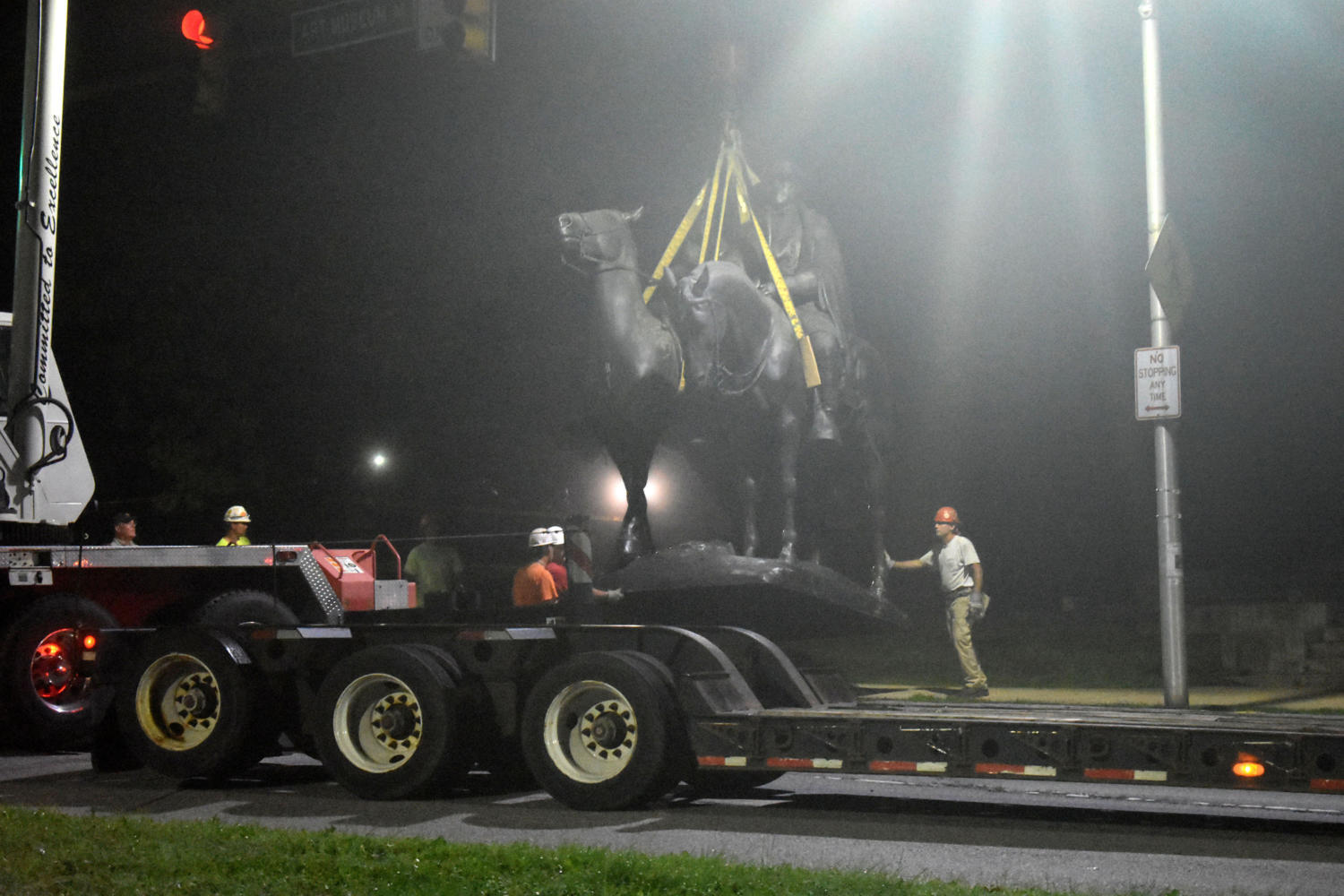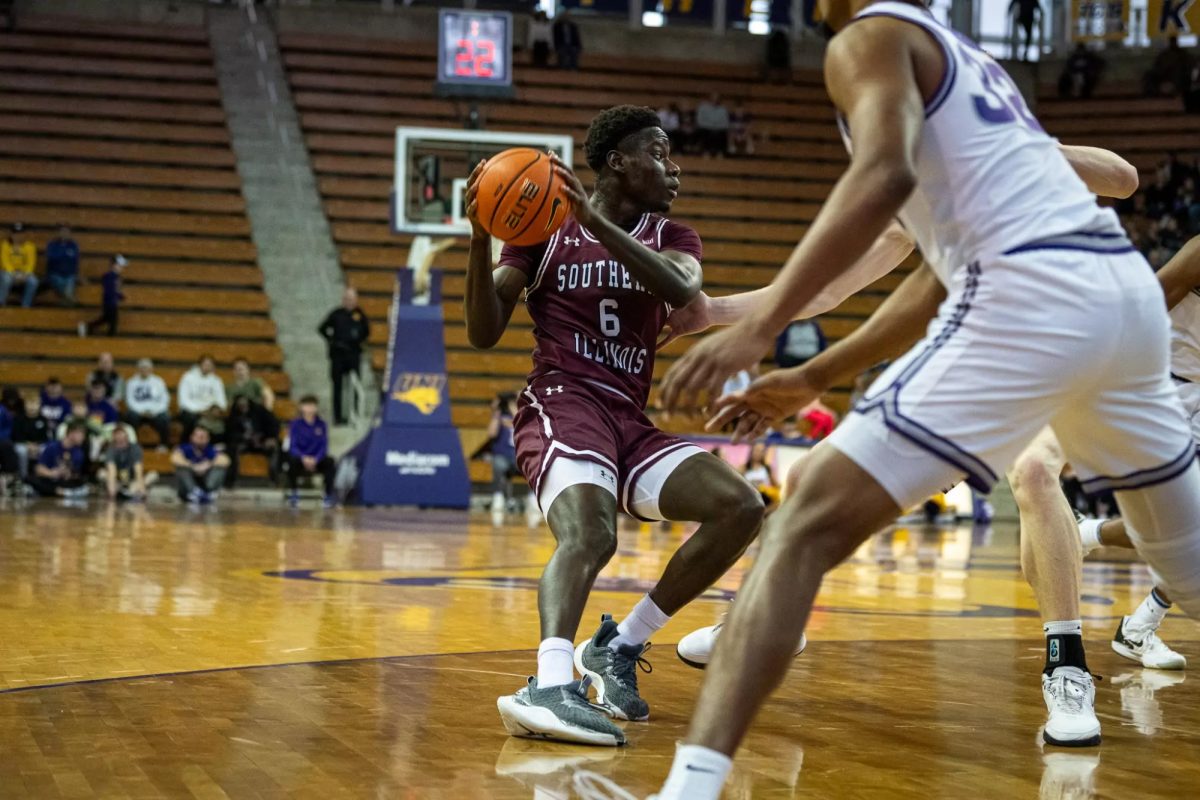Citing ‘safety and security,’ Baltimore mayor has Confederate monuments taken down overnight
The Jackson-Lee Monument in Wyman Park is removed on Aug. 16, 2017 in Baltimore, Md. (Denise Sanders/ Baltimore Sun/TNS)
August 16, 2017
Mayor Catherine Pugh said she decided Tuesday morning to remove four Confederate-linked statues from public spaces in Baltimore, then watched as crews worked into early Wednesday to tear them from their pedestals.
“We moved quickly and quietly,” said the mayor, who had pledged this week to remove them but would not say when. “There was enough grandstanding, enough speeches being made. Get it done.”
Pugh said crews removed the monuments unannounced and under cover of darkness between 11:30 p.m. and 5:30 a.m. in an effort to avoid the potential for a violent conflict similar to the one Saturday in Charlottesville, Virgina, where white nationalists’ protest against that city’s plan to remove a statue of Confederate General Robert E. Lee turned deadly.
Advertisement
The mayor said she contacted contractors and on Tuesday hired Whiting-Turner, which used heavy machinery to do the overnight job. A group of protesters had pledged to tear down a monument to Lee and “Stonewall” Jackson at Wyman Park Dell near Johns Hopkins University on Wednesday evening if the city did not.
“They needed to come down,” Pugh said. “My concern is for the safety and security of our people.”
Pugh declined to say how much it cost to remove the statues or where they were being kept. She said the city would provide cost details soon, but planned to keep the statues’ location a secret to avoid conflict.
When the monuments were loaded onto flatbed trucks and hauled away before sunrise Wednesday, it brought an abrupt end to more than a year of indecision about what to do with the memorials to Confederate leaders.
The issue was forced to the fore this week by the incident in Virginia, where a woman was killed when an alleged white supremacist rammed his car into a crowd of counter-protesters. In the wake of that violent encounter, the Baltimore City Council unanimously passed a resolution this week calling for the removal of the city’s monuments to the Confederacy. And the Maryland State House Trust voted Wednesday to remove a statue of Chief Justice Roger Brooke Taney — who has been linked to the Confederacy for writing an 1857 decision that upheld slavery — from the lawn of the State House.
It was unclear Wednesday how soon the statue of Taney in Annapolis would be removed.
There were four monuments linked to the Confederacy in Baltimore: the Lee-Jackson Monument, a monument to Taney at Mount Vernon Place, the Confederate Soldiers and Sailors Monument on Mount Royal Avenue and the Confederate Women’s Monument on West University Parkway.
Advertisement*
Such monuments in Baltimore and elsewhere were sharply criticized in 2015 after white supremacist Dylann Roof killed six blacks at a church in Charleston, S.C.
Stephanie Rawlings-Blake, then Baltimore’s mayor, commissioned a task force to prepare a report on what to do with the city’s monuments, but left the decision to Pugh, who was elected this past November.
The issue was relegated to the back burner amid a school budget shortfall, a sky-high homicide rate and other issues until last weekend, when 32-year-old Heather Heyer was killed in Charlottesville. The driver, James Alex Fields Jr., has been charged with second-degree murder and other charges.
The attack drew further calls for the removal of the city’s statues. Now that they’re down, Pugh said officials are deciding what to do with them. She said replacing them with historical markers explaining the significance of the monuments — and the reasons for their removal — would be appropriate.
“What should go in their place is a plaque of sorts that tells what was there and why it was removed,” Pugh said. “You can remove a statue but it is a part of the history of this nation. I don’t know why they were put there — I wasn’t here at the time — but I do know they’re offensive to many people in this nation.”
University of Maryland law professor Larry S. Gibson, a member of Rawlings-Blake’s commission — which recommended removing two of the statues — called Wednesday a “glorious day.”
“It was the first day that any Baltimorean alive has woke up in a city without monuments to the Confederacy,” he said.
The Lee-Jackson statue was erected in 1948 after a $100,000 donation from Baltimorean J. Henry Ferguson, whose father was a friend of Confederate President Jefferson Davis.
“They were great generals and great Christian soldiers,” Ferguson said at the time.
Three thousand people attended its dedication, including then-Gov. William Preston Lane Jr. and Baltimore Mayor Thomas D’Alesandro Jr.
“Today with our nation beset by subversive groups and propaganda which seeks to destroy our national unity, we can look for inspiration to the lives of Lee and Jackson to remind us to be resolute and determined in preserving our sacred institutions,” D’Alesandro said at the time.
Carolyn Billups, former president of the Maryland chapter of the United Daughters of the Confederacy, called the city’s action sneaky.
“Rats run at night,” she said. “It’s very saddening, but at least the monuments were not torn down by angry mobs.”
City Councilman Brandon Scott, the lead sponsor of the council’s resolution to tear down the monuments, didn’t see it that way.
“The mayor showed tremendous leadership doing it the way she did,” he said.
Scott said he’d like to see the monuments melted down and turned into statues of prominent Baltimoreans, such as the city’s first black mayor, Clarence “Du” Burns.
Pugh has previously suggested moving them to Confederate cemeteries.
___
(c)2017 The Baltimore Sun
Visit The Baltimore Sun at www.baltimoresun.com
Distributed by Tribune Content Agency, LLC.
Advertisement









